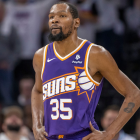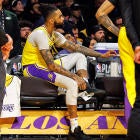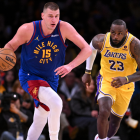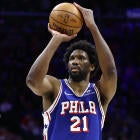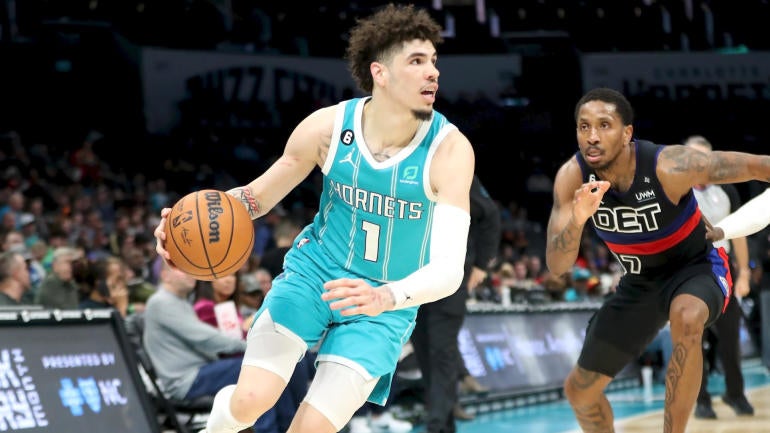
Monday represented a significant deadline on the NBA calendar: it was the last day that first-round picks from the 2020 NBA Draft could sign rookie extensions before their fourth seasons in the league begin. In total, 14 of those 30 players picked in the first round in 2020 ultimately managed to get extensions ahead of that deadline. Four of the remaining 16 didn't manage to make it through their rookie deals, and the remaining 12 will now become restricted free agents next July.
So who signed? Who didn't? And why does all of this matter? Let's track the extensions that were and weren't signed ahead the deadline and try to parse what all of Monday's activity actually means.
So, who actually got rookie extensions?
The following 14 players signed rookie extensions before Monday's deadline:
- LaMelo Ball: five years, maximum salary. The final figure will fall between roughly $217 million and roughly $260 million, depending on whether or not Ball earns Rose Rule eligibility by making an All-NBA team, winning MVP or winning Defensive Player of the Year this season.
- Anthony Edwards: five years, maximum salary. The final figure will fall between roughly $217 million and roughly $260 million, depending on whether or not Edwards earns Rose Rule eligibility by making an All-NBA team, winning MVP or winning Defensive Player of the Year this season.
- Tyrese Haliburton: five years, maximum salary. The final figure will fall between roughly $217 million and roughly $260 million, depending on whether or not Haliburton earns Rose Rule eligibility by making an All-NBA team, winning MVP or winning Defensive Player of the Year this season.
- Desmond Bane: five years, $197 million.
- Devin Vassell: five years, $135 million.
- Jaden McDaniels: five years, $131 million.
- Onyeka Okongwu: four years, $62 million.
- Isaiah Stewart: four years, $60 million.
- Deni Avdija: four years, $55 million.
- Josh Green: three years, $41 million.
- Cole Anthony: three years, $39 million.
- Aaron Nesmith: three years, $33 million.
- Zeke Nnaji: Four years, $30 million.
- Payton Pritchard: four years, $30 million.
Who is headed for restricted free agency?
Four 2020 first-round picks did not make it through their rookie deals. Those players were Jalen Smith, Leandro Bolmaro, R.J. Hampton and Udoka Azubuike. The remaining 12 players picked in the first round of the 2020 Draft will be restricted free agents next offseason. Below are those players, listed in order of when they were drafted:
- James Wiseman (No. 2).
- Patrick Williams (No. 4).
- Isaac Okoro (No. 5).
- Killian Hayes (No. 7).
- Obi Toppin (No. 8).
- Kira Lewis Jr. (No. 13).
- Aleksej Pokusevski (No. 17).
- Saddiq Bey (No. 19).
- Precious Achiuwa (No. 20).
- Tyrese Maxey (No. 21).
- Immanuel Quickley (No. 25).
- Malachi Flynn (No. 29).
What are our takeaways from these deals?
The volume here is surprising and potentially indicative of where players and their agents feel the market is headed. Extensions had been trending up in recent years, with the past two offseasons setting new highs with 11 extensions each. But 14 blows that figure out of the water, and, really, the number probably should have been 15. The Philadelphia 76ers will almost certainly extend Tyrese Maxey next summer, but are holding off in a clever but risky bit of cap manipulation.
So what's going on here? There's no single answer, but a confluence of events has conspired to seemingly scare more players than usual into foregoing free agency and taking security now. The de-emphasization of free agency as a mechanism for changing teams is a big part of this. Teams typically now prefer to extend players and trade them later rather than carry cap space into offseasons, and the result has been very few teams with cap space over the past few summers.
Restricted free agents in particular have been hit hard in recent years. Consider Austin Reaves. The Lakers were so steadfast in their plans to match any offer he was given that no team even bothered to give him an offer sheet. He was forced to return to Los Angeles on a massive discount. Only two restricted free agents even signed offer sheets with new teams this offseason: Matisse Thybulle and Paul Reed. Both offer sheets were below the full mid-level exception, so cap space wasn't needed. The only restricted free agent to change teams this offseason was Grant Williams, who did so in a sign-and-trade for roughly the full mid-level amount. There just isn't enough cap space floating around the league anymore for restricted free agents to depend on getting fair value on the open market. So they take a little less for security.
But a stealth factor here? The NBA hasn't agreed to a new media rights deal yet. One is certainly coming over the next year, and if it is as big as the league hopes, the cap will rise by the maximum of 10% each year for the foreseeable future. Such growth would make these contracts look even smaller by comparison. But what if the new TV deal isn't as lucrative as the league had hoped? Initial reports suggested the NBA was hoping for $75 billion deal, effectively tripling the current deal with Turner and Disney. If the new deal is smaller, it will affect player salaries. Perhaps there is some fear that the new deal doesn't create quite as much growth as expected, and players wanted to secure their money now, before that question is answered definitively.
Certain extensions are almost inevitable. The max players, for instance, have very little incentive to wait unless they're trying to force a trade (which rarely happens this early anyway). But middle-class players tend to be a bit more choosy because their salaries can vary so much based on circumstance. Take players like Onyeka Okongwu and Josh Green, for instance. Both have chances to end the season as full-time starters. If they do they, they'd probably be in line for far more than they ultimately signed for. Okongwu got little more than the mid-level extension despite the fact that Atlanta tried to trade Clint Capela over the summer to clear a starting job for him. Green got roughly the mid-level amount, but may wind up being the primary wing defender on a contender in Dallas. These are classic "bet on yourself" circumstances.
But this offseason, even bench players weren't comfortable taking that risk. Between 2016 and 2020, there wasn't a single rookie-scale extension signed for less average annual value than the mid-level exception. We got one each in 2021 (Grayson Allen) and 2022 (Nassir Little). In 2023, we got three: Nesmith, Nnaji and Pritchard. These are the kind of players that typically want to seek bigger roles and more money as restricted free agents. Instead, all took what they could get.
It's too soon to suggest that this is a league-wide trend. For all we know, the league could shift back to free agency over trading as the primary means of player-movement in the next year or two and incentivize more rookie extension candidates to wait. But right now, players understand that conditions just aren't ripe for free agency pay days. Their best bet is to stay put even if it means taking a bit less than their production suggests they deserve.















